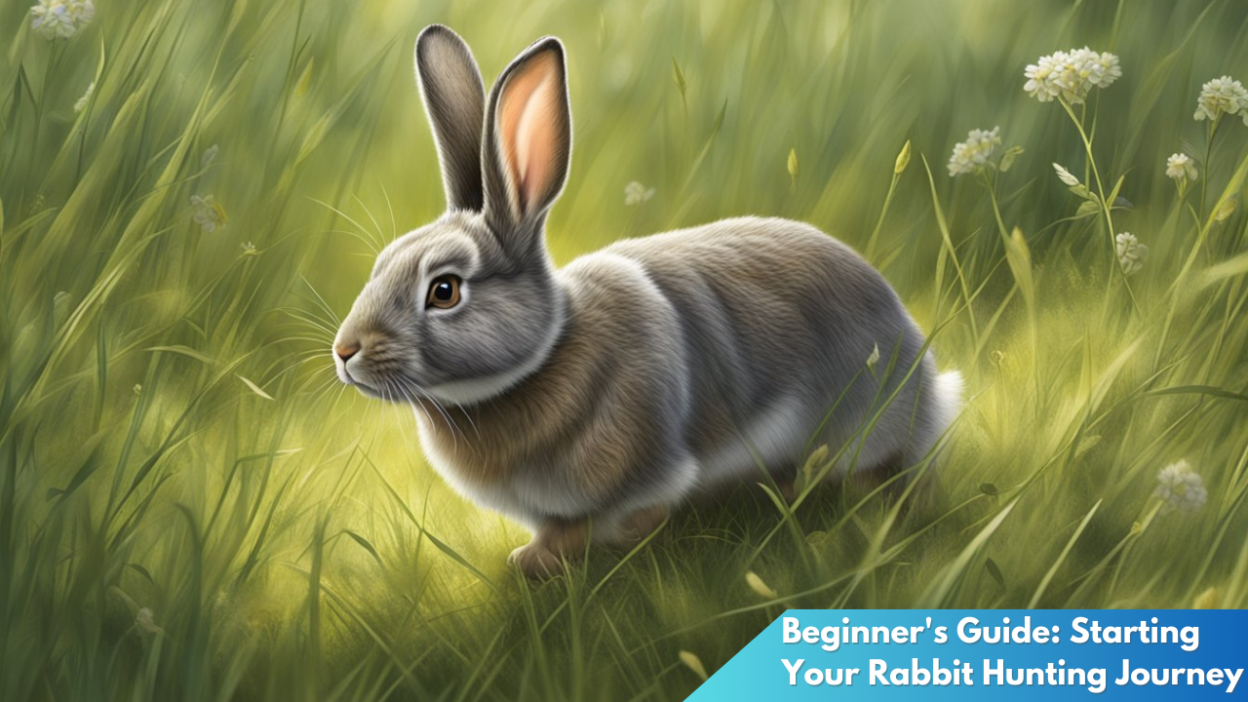Embarking on a rabbit hunting journey is an exciting and rewarding outdoor adventure that combines skill, patience, and a deep appreciation for nature. For beginners, understanding the nuances of rabbit behavior, equipping oneself with the right gear, and adhering to safety and ethical guidelines are crucial steps in ensuring a successful and responsible hunting experience. This guide aims to provide aspiring hunters with foundational knowledge and practical tips to get started on this thrilling pursuit.
Understanding Rabbit Behavior and Habitat

Rabbits are crepuscular animals, meaning they are most active during dawn and dusk. This behavior is an evolutionary adaptation to avoid predators, as the low light conditions make it harder for them to be spotted. For hunters, understanding this activity pattern is key to planning successful hunting trips. Observing how rabbits move and interact with their environment can provide valuable insights into their behavior and help in predicting their movements.
Rabbits prefer habitats that offer ample cover and food sources. They thrive in areas with a mix of open fields and dense underbrush, providing them with easy access to food while offering protection from predators. Familiarizing yourself with these environments is essential for locating rabbit populations. Look for signs such as droppings, tracks, and nibbled vegetation to identify active areas. It’s also important to note that different rabbit species may prefer different types of terrain.
The social structure of rabbits is another important aspect to consider. While many rabbits are solitary, some species live in groups, especially during the breeding season. Recognizing these social patterns can improve your hunting strategy, as it may affect where and when you’ll find them. Observing these behavior traits, combined with knowledge of their preferred habitats, lays the foundation for a successful hunting experience.
Essential Gear for the Aspiring Hunter

Equipping yourself with the right gear is crucial for a productive and enjoyable rabbit hunting trip. The most important item is a reliable firearm or bow. For beginners, a 20-gauge shotgun is often recommended due to its balance of power and ease of use. Alternatively, a .22 caliber rifle can be effective for those who prefer a more precise approach. Archery enthusiasts might opt for a light draw weight bow with small game broadheads.
Proper attire is another essential consideration. Wearing camouflaged clothing helps you blend into the surroundings, making it harder for rabbits to spot you. Additionally, wearing durable boots with good ankle support can make navigating rough terrain more comfortable. Don’t forget a sturdy pair of gloves and a hat to protect yourself from the elements.
Accessories such as binoculars, a game bag, and a knife are also important. Binoculars can help spot rabbits from a distance, while a game bag allows you to carry your harvest efficiently. A sharp knife is necessary for field dressing your catch. Investing in quality gear not only increases your chances of success but also ensures a safe and enjoyable hunting experience.
Safety Practices and Ethical Hunting Guidelines
Safety should be the top priority for any aspiring hunter. Start by familiarizing yourself with the basic principles of firearm safety, including keeping your weapon pointed in a safe direction, treating every gun as if it were loaded, and being sure of your target and what lies beyond it. Always wear a bright-colored vest, such as orange, to make yourself visible to other hunters in the area.
Ethical hunting is equally important and involves respecting the animals and the environment. This means adhering to hunting regulations, such as season dates and bag limits, to ensure sustainable populations. Practice clean and humane kills to minimize suffering, and avoid taking shots unless you are confident in a quick, effective hit. This not only demonstrates respect for the animal but also sets a good example for others.
Lastly, consider the impact of your presence on the environment. Stick to established paths to minimize habitat disruption, and always leave the area as you found it, picking up any trash or spent shells. By following these safety practices and ethical guidelines, you contribute to the conservation of wildlife and the sustainability of the hunting tradition.
Starting your rabbit hunting journey as a beginner is a thrilling opportunity to connect with nature, develop new skills, and contribute to wildlife management. By understanding rabbit behavior and habitats, equipping yourself with the right gear, and committing to safety and ethical practices, you lay the groundwork for a rewarding hunting experience. As you continue to learn and grow in the sport, remember that responsible hunting not only enriches your own experience but also ensures the preservation of this time-honored tradition for future generations.



